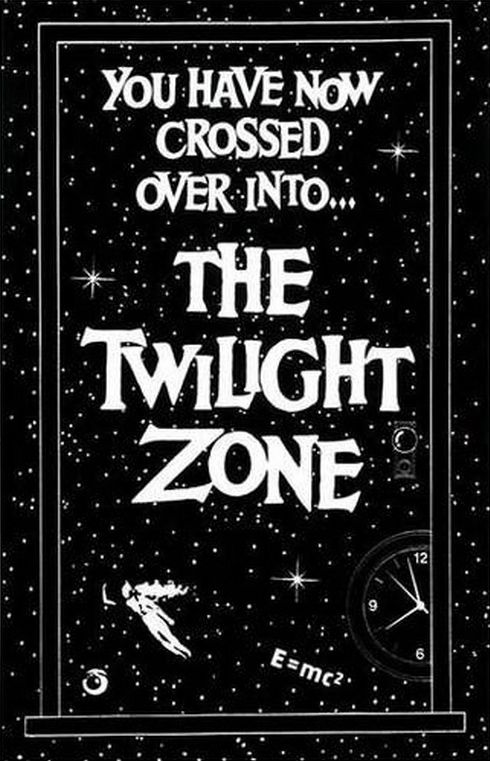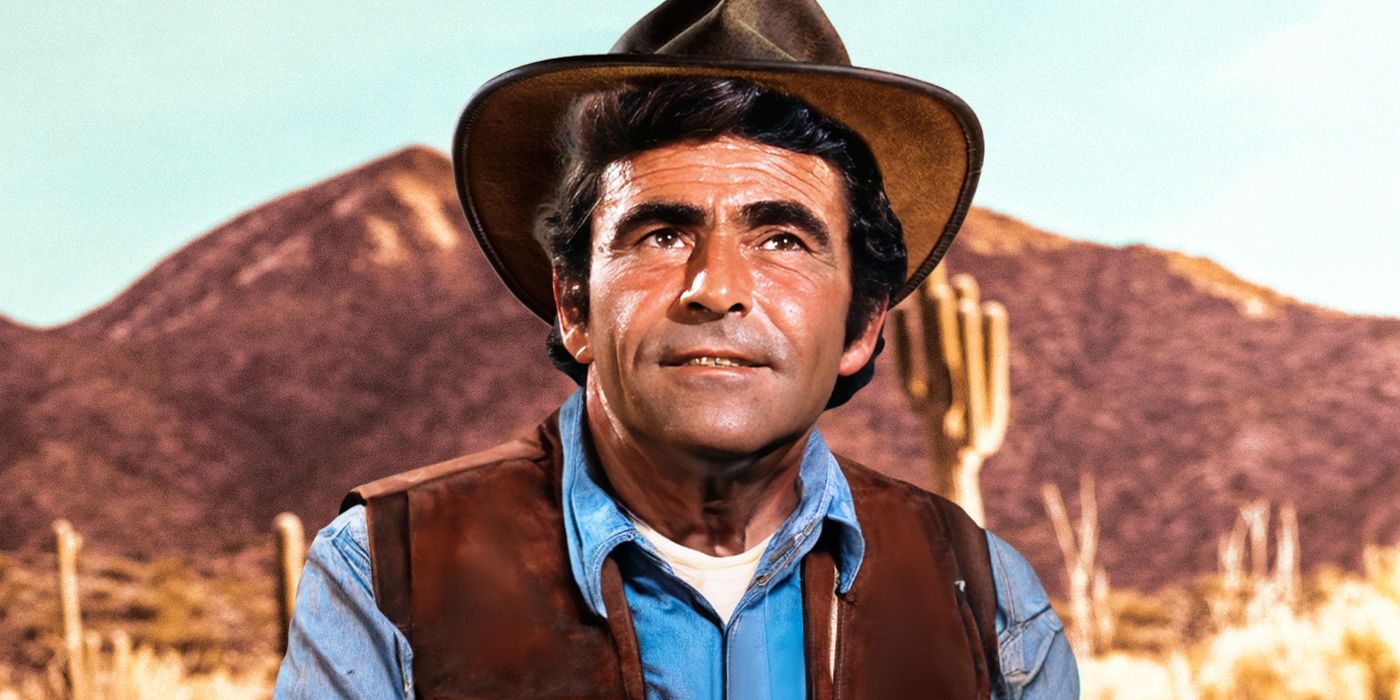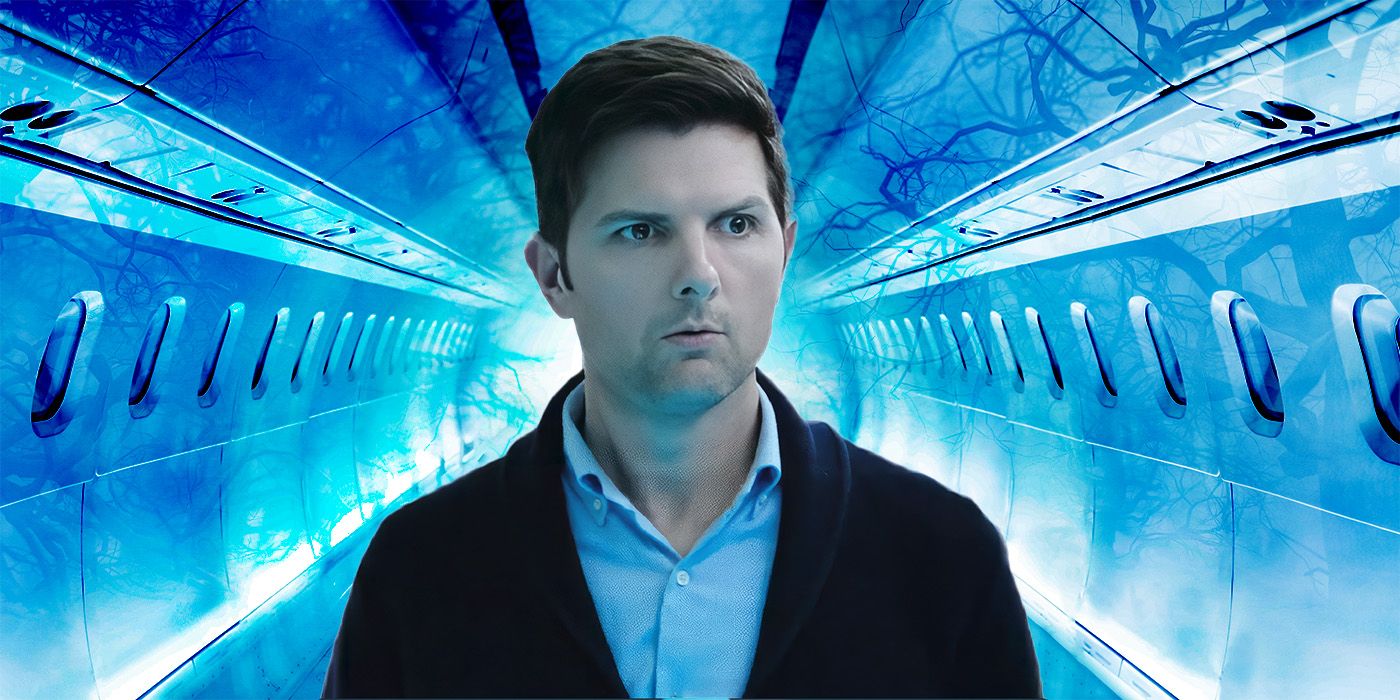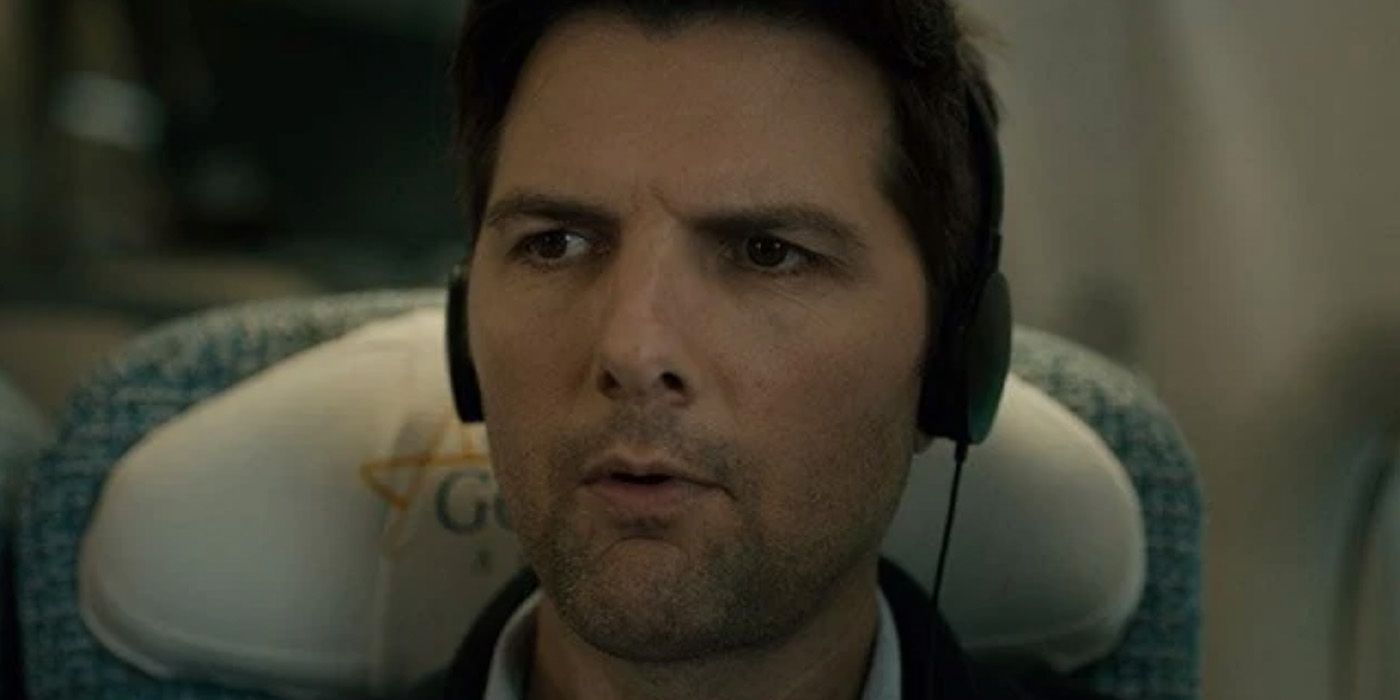The Big Picture
- "Nightmare at 20,000 Feet" episode has been remade multiple times in various revivals of The Twilight Zone series.
- The original 1963 episode remains the best among all adaptations, praised for its suspenseful storytelling and iconic performances.
- The 2019 version, "Nightmare at 30,000 Feet," took a spookier twist by removing the gremlin, setting a different tone.
Since 1959, The Twilight Zone has dazzled, confused, frightened, and convicted audiences around the world. The original Rod Serling series reinvented the mass appeal of the anthology, and all subsequent revivals have fought with varying degrees of success to recapture that same magic. But one episode has been remade on multiple occasions throughout The Twilight Zone's history, standing far above the rest. This popular hour from the original show's final season still delights audiences to this day. That's right, we're talking about "Nightmare at 20,000 Feet," and if you thought one horror story about a plane crash was bad, three of them might make you a bit nauseous.

The Twilight Zone (1959)
Ordinary people find themselves in extraordinarily astounding situations, which they each try to solve in a remarkable manner.
- Release Date
- October 2, 1959
- Creator
- Rod Serling
- Cast
- Rod Serling , Jack Klugman , Burgess Meredith , John Anderson
- Seasons
- 5
"Nightmare at 20,000 Feet" Started as a Short Story
"Nightmare at 20,000 Feet" is notable for a few reasons. It starred Star Trek legend William Shatner in the leading role as traveler Robert "Bob" Wilson, it was directed by future Superman: The Movie and The Goonies legend Richard Donner, and it was penned by I Am Legend scribe Richard Matheson. In fact, the Twilight Zone episode was originally imagined as a short story by Matheson that appeared in the Alone By Night anthology collection in 1961. "I was on an airplane, and I looked out, and it was all these fluffy clouds," Matheson revealed in an interview with the Television Academy Foundation years later. "And I thought, gee, what if I saw a guy skiing across that like it was snow? Because it looked like snow. And then, when I thought it over, that was not very scary, so I turned it into a gremlin out on the wing of the airplane. And it was published as a novel at first, and then I sold it to Twilight Zone."
In the short story version, Wilson (originally named Arthur Jeffrey Wilson) is a businessman on the verge of a nervous breakdown. In fact, he was a man contemplating suicide via the handgun in his pack when he first begins to see a creature on the side of the plane. "But of course you couldn't do that on television," Matheson told Marc Scott Zicree when interviewed for The Twilight Zone Companion. Instead, Shatner's Wilson is a man who has recently been discharged from a mental facility and is returning home with his wife Julia (Christine White) when he sees a gremlin (Nick Cravat) outside his passenger window looking at the wing. Eventually, the creature begins messing with the airplane, which causes Bob Wilson to nearly lose it as he attempts in vain to convince his wife and the flight crew of the danger.
Taking matters into his own hands, Wilson steals a gun from a sleeping police officer and all but throws himself out the plane window in an attempt to kill the monster. He succeeds in saving the aircraft, but at the cost of his freedom. The iconic episode ends with the plane on the ground and Wilson, now convinced that he's completely sane, is carted away in a straightjacket while his wife helplessly looks on. Yet, Rod Serling's hopeful words close out this tale, which focuses on the remnants of the gremlin's attempts to destroy the plane. "Happily, his conviction will not remain isolated too much longer, for happily, tangible manifestation is very often left as evidence of trespass, even from so intangible a quarter as the Twilight Zone." As one of the highest rated episodes of The Twilight Zone, "Nightmare at 20,000 Feet" is a masterclass in suspenseful storytelling juxtaposed with a triumphant and relatable tale about overcoming one's fears. No wonder it's withstood the test of time, even if smoking on an airplane is a seriously outdated practice.
'Twilight Zone: The Movie' First Remade the Episode
When "Nightmare at 20,000 Feet" first aired in October 1963, nobody ever thought that the Twilight Zone episode would be as beloved as it eventually became. Its popularity only skyrocketed with the advent of the feature film revival in 1983. There have been a handful of Twilight Zone revivals over the years following the original series ending in the early 1960s, but the first was via Twilight Zone: The Movie. The film was a unique take on the television series, detailing four segments produced independently of another with four different film directors at the helm. John Landis, Steven Spielberg, Joe Dante, and George Miller each remade or reworked episodes from the original show, with Miller given the task of adapting Matheson's classic on a larger scale, a daunting one un-envied by fans and critics alike.
This time around, Matheson again adapted his own work (and co-wrote two of the other segments in the film), with John Lithgrow playing the overly-sweaty, panic attack-induced passenger named John Valentine. Valentine, unlike William Shatner's Bob Wilson, travels alone on his flight and has a much harder time adapting to the highs and lows of air travel. But when he sees a hideous creature on the wing of the plane, just as they go through a lightning storm, well, the familiar tale begins again. The movie adapts the original episode pretty well, with Lithgow emphasizing the erratic nature of the distraught passenger more than Shatner even could. Despite not introducing anything novel with the material, Lithgrow's Valentine is a major highlight here, and the main reason this remake works. Clearly crazed, though lacking the same charisma as Shatner, Valentine is a man we can all feel for, especially since his gremlin is by far the most deadly. The creature is more horrific than anything we saw in Richard Donner's original episode, with a slimy tail and grotesque bulging eyes and teeth. No doubt, this monster is a much bigger threat than the fuzzy, gorilla-like creature from the '60s.
Unsurprisingly, Valentine's story ends the same way as Wilson's, with the lead being carted off following a near-death attempt to kill the thing that almost killed him (and everyone else). But this time around, air mechanics actually find evidence that there was something on the plane, ending George Miller's interpretation on a more direct note than the original. Twilight Zone: The Movie makes it clear that something was up there in the clouds, and it very nearly killed everyone on board. The movie itself got some pretty mixed reviews from critics, and was already under scrutiny due to the deaths that resulted during the filming of Landis' segment. Nevertheless, Twilight Zone: The Movie was followed by a 1985 revival series that lasted three seasons.
How Did Jordan Peele's 'Twilight Zone' Change the Story?
After the '85 revival, The Twilight Zone returned again to the screen in 1994 with Twilight Zone: Rod Serling's Lost Classics, and again later on in 2002 for a 43-episode revival on the UPN. It would be nearly two more decades before The Twilight Zone revived itself again, this time with the two-season 2019 revival that first dropped on the now-defunct CBS All Access. But in the 2019 version, hosted by Jordan Peele, we got a brand-new iteration of the familiar classic. This time, the now renamed "Nightmare at 30,000 Feet" was written by Marco Ramirez based on a story by Peele, Ramirez, and Simon Kinberg. Greg Yaitanes directed the episode, and Adam Scott starred as the PTSD-afflicted Justin Sanderson, a journalist who finds a mysterious MP3 player in his seat foretelling the disappearance of his particular flight.

Rod Serling Took a Shot at Classic Westerns With This ‘Twilight Zone’ Episode
Rod Serling is one sneaky fellow.Unlike the previous two nightmares, "Nightmare at 30,000 Feet" doesn't center on a man facing down a gremlin hell-bent on crashing the plane. Instead, as Sanderson listens to the podcast on his mysterious MP3 player, he discovers "The Mystery of Northern Goldstar Flight 1015," which is said to disappear about an hour into its flight time. Narrated by Dan Carlin's Rodman Edwards (a direct reference to Rod Serling's given name, Rodman Edward Serling), the podcast rattles Sanderson, who struggles to retain his composure as he investigates the plane for any suspicious characters. Aboard with him is Joe Beaumont (Chris Diamantopoulos), a former pilot himself who actually believes Sanderson after he begins running around the plane attempting to stop it from crashing. Of course, what Sanderson doesn't know is that Joe is the one responsible for the crash of another flight... and soon Flight 1015 as well.
By removing the gremlin creature entirely, "Nightmare at 30,000 Feet" is a spookier tale. Its sleek mystery, conspiracy-driven narrative, and spectacular cast make it an adaptation that, if they hadn't named it such, would have been seen as purely an homage to the original rather than a retelling. In most ways, "Nightmare at 30,000 Feet" is an entirely different story than the one previously detailed in The Twilight Zone past, and that's certainly to its benefit. Perhaps the biggest shift here (besides the serious lack of literal gremlins, despite a fun reference at the end) is that the plane actually does crash this time around, with Sanderson framed as the prime suspect by the remaining survivors. As a result, they murder him in a scene that feels more like Lord of the Flies than The Twilight Zone. As the episode comes to a close, Peele notes that "Justin discovered that the flight path to hell is paved with good intentions, and it passes directly through The Twilight Zone."
The Original 'Twilight Zone' Episode Is Still Its Best
Still, nothing beats the original. Twilight Zone: The Movie was a familiar yet distinct take on the idea, and the 2019 "Nightmare at 30,000 Feet" shook things up in ways audiences would never have expected, but the original 1963 episode remains the best of the bunch. It's a novel exploration of aerophobia that manages to frighten and delight us. William Shatner's performance is impeccable, and it's easy to believe that he is a possibly unwell man trying to do a decent thing. The original gremlin creature is a classic to be sure (even if Matheson hated it), and it's distinct look and energy have far outlived its original airdate. "I love it, I do love it," director Richard Donner noted in The Twilight Zone Companion. "It's such an unusual thing for television, really, to see that much energy go into a little half-hour film. And the story was good, too."
The original "Nightmare at 20,000 Feet" has been referenced and parodied in everything from The Simpsons' "Treehouse of Horror" to Sharknado 2 and even The Lego Batman Movie (which featured the Mogwai from Gremlins attacking a plane). And let's not forget that episode of Extreme Ghostbusters where "that Twilight Zone episode with Captain Kirk" is noted before a literal gremlin is set loose on an airplane. Even Jordan Peele, who co-helmed the 2019 reimagining, referenced the original in the Key & Peele sketch "Airplane Continental," reminding us of this Twilight Zone episode's lasting impact on pop culture over 60 years later. Maybe it's the familiar anxieties we all feel when flying, the convincing nature of the lead performances, or possibly our own daydreams whenever we look outside the window of an airplane, but whatever it is that keeps us returning to "Nightmare at 20,000 Feet," it's clear that, no matter which way we turn, we will never quite escape The Twilight Zone.
The Twilight Zone is available to watch on Paramount+ in the U.S.


